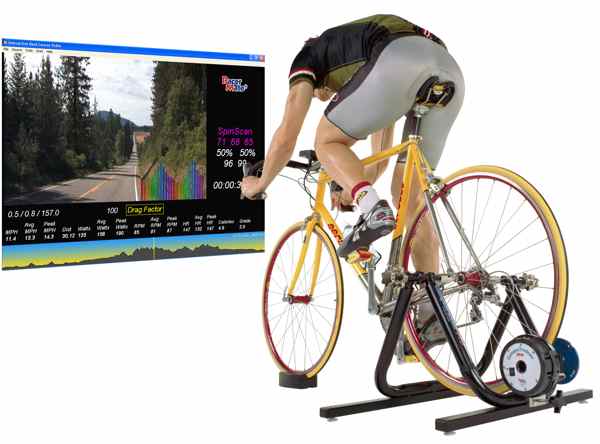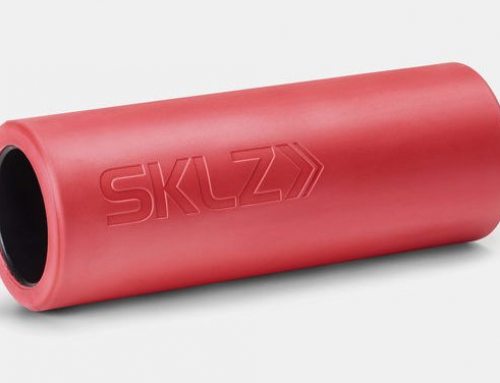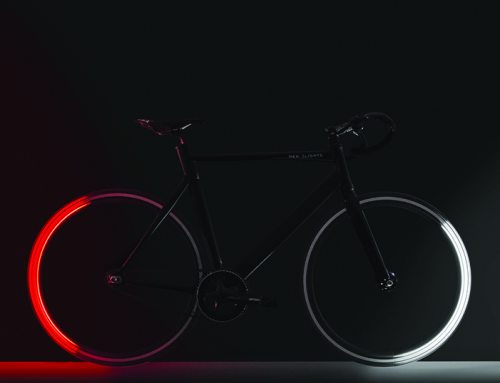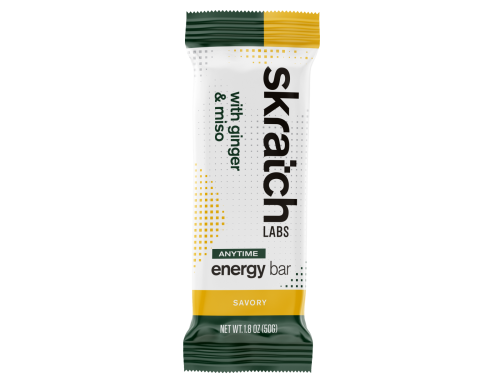
By Eric Bean
Going faster on the bike is simple. Either reduce your drag, or increase your power. The CompuTrainer (http://www.racermateinc.com/) ergometer (CT) is a computer-controlled stationary trainer that can help you do the latter. Not only does it measure power, it can demand that a rider produce a pre-programmed or manually controlled power regardless of cadence. Additionally, it simulates real courses (with GPS and video) or user-designed virtual courses and analyzes a rider’s pedaling efficiency. In terms of speed gain per dollar spent, the CT is second only to aerobars as the best cycling equipment investment.
CompuTrainer has been manufactured by RacerMate in Seattle, WA, since 1986. It comes in two models: the Pro, and the Lab, which is calibrated over a wider range of speeds. At $1649 and $1699, respectively, this is significantly more expensive than a fluid trainer, yet is comparable to power meters (SRM $1945–$3045; PowerTap $600–$2100, hub only).
The CT comes standard with several software programs. A thorough discussion of this software could be a review unto itself, so I’ll highlight four key features:
In Ergometer mode the load generator varies the resistance so that regardless of your cadence/speed, you output the target power. A handlebar control unit provides manual adjustment in 5-watt increments, or users can write a power profile in 1-watt increments that the Coaching Software (CS) uses to automatically control the workout. The majority of my workouts and those of athletes I coach use this feature because it “forces” the athlete to ride hard. Hence it is the software I use to conduct an LT test when mapping an athlete’s training zones. The CT is more accurate and repeatable than using a fluid trainer or the road for this testing, and is preferable to a research ergometer because the cyclist can ride their own bike. My only complaint is that the software is clunky, but a new streamlined version will be released this fall.
If you are curious about your pedaling efficiency, try the SpinScan (SS) feature. SS graphically displays a rider’s torque profile in 15-degree increments through the pedal circle and calculates the SS Number (a surrogate for pedaling efficiency). SS identifies your dead spots and gives you instant feedback while you practice—a very useful feature, especially for non-elite cyclists or triathletes whose background is in a different sport.
Course Simulation options are unlimited: GPS course files from major races come preloaded, other course files are posted on the race’s website, GPS data can be uploaded from your Garmin, topographical data can be taken from Topo software, and users can design their own course complete with hills, wind, turns, and scenery options. I’ve used this feature to “preview” courses that I could not physically visit prior to a race. While a virtual visit cannot substitute for riding a course in the flesh, it does provide an indication of how fast or difficult a course will be.
Anyone who has ridden a new training route that they perceived to be long initially, and then ridden it again and felt it was much shorter, can understand the value of having a mental image of a race course. Real Course Videos provide this option for all Ironman 140.6s and 70.3s, and most of the major non–World Triathlon Corporation triathlons in the US. This feature displays a video of the bike course that is linked to GPS coordinates, so as the load generator simulates the terrain, the video speed matches the rider’s speed.
RacerMate claims CT is the most interesting indoor bike experience, has a 10+ year lifetime, is ± 2.5% accurate for power, and increases cycling power by 20–30% and speed by 2–4 mph. Are these claims too good to be true?
I agree that it is the most interesting indoor bike experience. You can design any workout, ride any course in the world—real or imaginary, use real or imaginary scenery, race an imaginary pacer (whose wattage you set) with or without drafting, or race up to 7 other real CT riders simultaneously (even someone in Australia via the Internet), and there is plenty of data to keep you focused. CT workouts are not boring, and I don’t need to watch Tour de France DVDs to get through a trainer session.
As for durability, I’ve had a CT Pro model since 2000 that has followed me from California to North Carolina to the Midwest, and it is still working perfectly. This is notable because if you’ve seen my car, you know I’m tough on equipment.
I and the athletes I coach have noted good correlation and repeatability between the CT, SRM, and PowerTap, all of which claim ± 1.5–2.5% accuracy. A simple coast-down calibration test determines the tire rolling resistance to preserve power accuracy despite different combinations of tires, tire pressure, and press-on force. I believe the ± 2.5% accuracy is legitimate. In fact, I’ve worked with two sports physiology labs, Duke and Stanford, which use the CT for athlete testing. University of Capetown (South Africa) research demonstrated the CT has ± 0.8% repeatability, which is more important than accuracy in terms of benchmarking fitness. Finally, the elite cohort of athletes on the Fast Forward Triathlon/InsideOut Sports Pro Development Team train on the CT. We are tracking power improvements, with the expectation of publishing articles on training methods and performance. These latter three points are testaments to the (research-grade) accuracy of the CT. The preliminary data from the Pro Development Team show significant upgrades in performance, which leads into the most important question.
Has CT training helped increase my power by 20–30% and my speed by 2–4 mph? When I started using a CT in 2000 I was a “neo pro,” had won the M18–24 age group at Ironman Hawaii, and had a 4:54 IM bike PR from IM FL. To improve 4 mph, I would need to set a new IM bike world record. As unrealistic as that notion is, my IM AZ 2009 bike split of 4:29 represents a 2.1 mph and 25-minute improvement over my pre-CT IM FL performance, and on a similar course. My power has increased considerably as well. From 2002 to 2009 I improved from ~350W to over 400W at LT. Tempo power, perhaps more specific to IM cycling performance, has increased similarly, from ~300W in 2006, to 355W last year, an 18% improvement, very close to the advertised 20%. While this improvement only meets the bottom end of RacerMate’s claims, it has enabled me to step from the age group to the pro podium.
More importantly, I have improved despite training less. As a medical student, my non-hospital hours are extremely scarce. Combined with living in Madison, WI through the winter means I have to train at odd hours or when it is 20-below with 5 feet of snow outside. For me, an indoor training option is a necessity. Last year during the notorious third year of med school, I trained less than 6 hours per week in the first 6 months of the year and still raced a PR 8:29 at IM AZ. This isn’t possible without the short yet high-yield workouts enabled by the CT: an LT or VO2 workout takes an hour on the CT compared to 2.5 hours on the road. Furthermore, my workouts are more intense on the CT, as measured by average power and HR. Finally, observing week-to-week progress through a strength, VO2, or LT phase is motivating feedback that keeps me training hard.
One may argue that a normal fluid trainer enables all the points in the previous paragraph. But I disagree for one simple reason. The workouts I do on the CT are too hard for me to do on a fluid trainer. I’m just not that tough. On the CT I simply program the power prescription and turn the pedals. I have to generate the required power to keep the pedals moving. This frees my mind to focus 100% on spinning fluidly, rather than trying to “force” my power by mashing. It’s like having a personal rabbit drag you through each workout.
There are two drawbacks to the CT that I have not mentioned. First, with the power and flexibility of this training tool comes a learning curve that can be intimidating initially but is overcome within a few sessions. Second, RacerMate offers two HRM options that can both be flaky. The earbud HRM clips to an earlobe and is very comfortable, but becomes corroded by sweat within a few seasons and then will drop out mid workout. A wireless chest-strap HRM is also available, but in my experience the sensor has difficulty reading the chest-strap signal, so I’ve stuck with the earbud. RacerMate has redesigned the chest-strap HRM sensor by adding a signal-processing chip. It is scheduled for release this fall. They report it solves the sensor issue, but a test unit was not available for me to verify.
In summary, the CompuTrainer is a great product that lives up to its claims. If you are already an elite cyclist, you may not improve by 2–4 mph and 20–30% power on the bike, but unless your name is Fabian Cancellara, you will probably get close. And if a career and a family limit your training time, you will benefit from the hours of training time saved each week.
# # #
Eric Bean is a professional triathlete and the coach of the new Fast Forward Triathlon Pro Development Team presented by Inside-Out Sports. Prior to founding FFT, Bean was the head coach of the Stanford University Triathlon Team, and the USAT Collegiate National Champion. Bean’s breadth-upon-depth understanding of triathlon training is guided by his athletic background as an NCAA swimmer and runner, and omnium national champion cyclist. A nerd at heart and proud of it, Eric holds a BS in Aerospace Engineering, an MS in Biomechanical Engineering, and is currently spreading his final year of medical school over two years to race Ironman Hawaii for the fifth time. This October he hopes to improve on his 8:29 personal best, then integrate his education and athletics with groundbreaking sports physiology research. He splits his residence between North Carolina and the Midwest. You can reach him at eric@fastforwardtriathlon.com.






